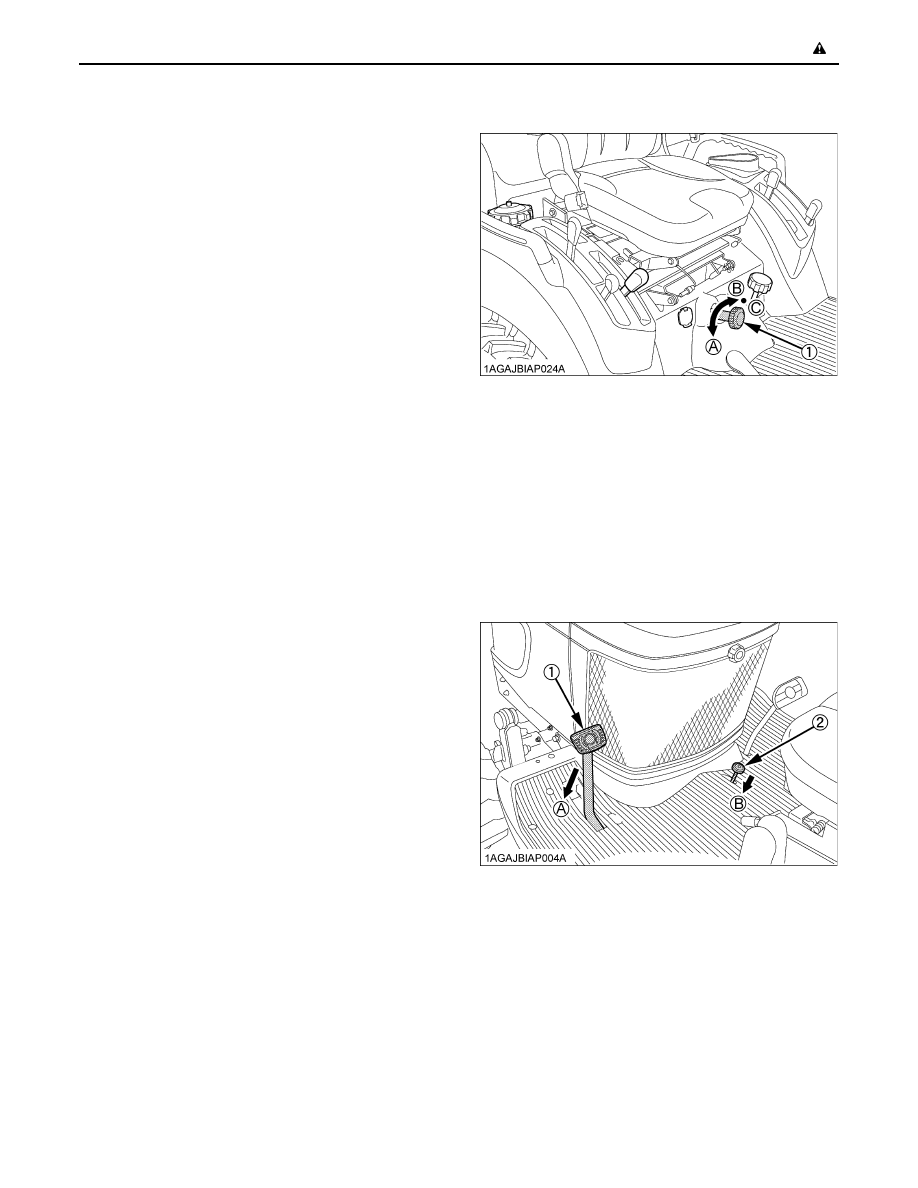Kubota tractor (BX25DLB-AU, LA240A, LA240A, AU-SG, BT602). OPERATOR'S MANUAL - part 4

-
3
SAFE OPERATION
6. Never allow children to play on the machine or on the
implement.
7. Use extra caution when backing up. Look behind and
down to make sure area is clear before moving.
C
Operating on slopes
Slopes are a major factor related to loss-of-control and tip-
over accidents, which can result in severe injury or death.
All slopes require extra caution.
1. To avoid upsets, always back up steep slopes. If you
cannot back up the slope or if you feel uneasy on it, do
not operate on it. Stay off slopes too steep for safe
operation.
2. Driving forward out of a ditch, mired condition or up a
steep slope increases the risk of a tractor to be upset
backward. Always back out of these situations. Extra
caution is required with 4-wheel drive models because
their increased traction can give the operator false
confidence in the tractor's ability to climb slopes.
3. Keep all movement on slopes slow and gradual. Do
not make sudden changes in speed, direction or apply
brake and make sudden motions of the steering
wheel.
4. Avoid changing gears speed when climbing or going
down a slope. If on a slope changing gears to neutral
could cause loss of control.
5. Special attention should be made to the weight and
location of implements and loads as such will affect the
stability of the tractor.
6. To improve stability on slope, follow recommendations
for proper ballasting as shown in "BALLAST" section.
C
Driving the tractor on the road
1. Check the front wheel engagement. The braking
characteristics are different between 2 and 4-wheel
drive. Be aware of the difference and use carefully.
2. Always slow the tractor down before turning. Turning
at high speed may tip the tractor over.
3. On public roads use the hazard lights, if required by
local traffic and safety regulations.
4. Observe all local traffic and safety regulations.
5. Turn the headlights on.
6. Drive at speeds that allow you to maintain control at all
times.
7. Do not apply the differential lock while traveling at road
speeds. The tractor may run out of control.
8. Avoid sudden motions of the steering wheel as they
can lead to a dangerous loss of stability. The risk is
especially great when the tractor is traveling at road
speeds.
9. Keep the ROPS in the "UP" position and wear the seat
belt when driving the tractor on the road.
Otherwise, you will not be protected in the event of a
tractor roll-over.
10.Do not operate an implement while the tractor is on the
road. Lock the 3-point hitch in the raised position.
11. Set the implement lowering speed knob in the "LOCK"
position to hold the implement in the raised position.
1. Disengage the PTO, lower all implements to the
ground, place all control levers in their neutral
positions, set the parking brake, stop the engine,
remove the key from the ignition and lock the cab door
(if equipped). Leaving transmission in gear with the
engine stopped will not prevent tractor from rolling.
2. Make sure that the tractor has come to a complete
stop before dismounting.
3. Avoid parking on steep slopes, if at all possible park on
a firm and level surface; if not, park across a slope with
chock the wheels.
Failure to comply with this warning may allow the
tractor to move and could cause injury or death.
(1) 3-point hitch lowering speed knob
(A) "FAST"
(B) "SLOW"
(C) "LOCK"
3. PARKING THE TRACTOR
(1) Brake pedal
(2) Parking brake pedal
(A) "DEPRESS"
(B) "PUSH DOWN (2) WHILE
DEPRESSING (1)"